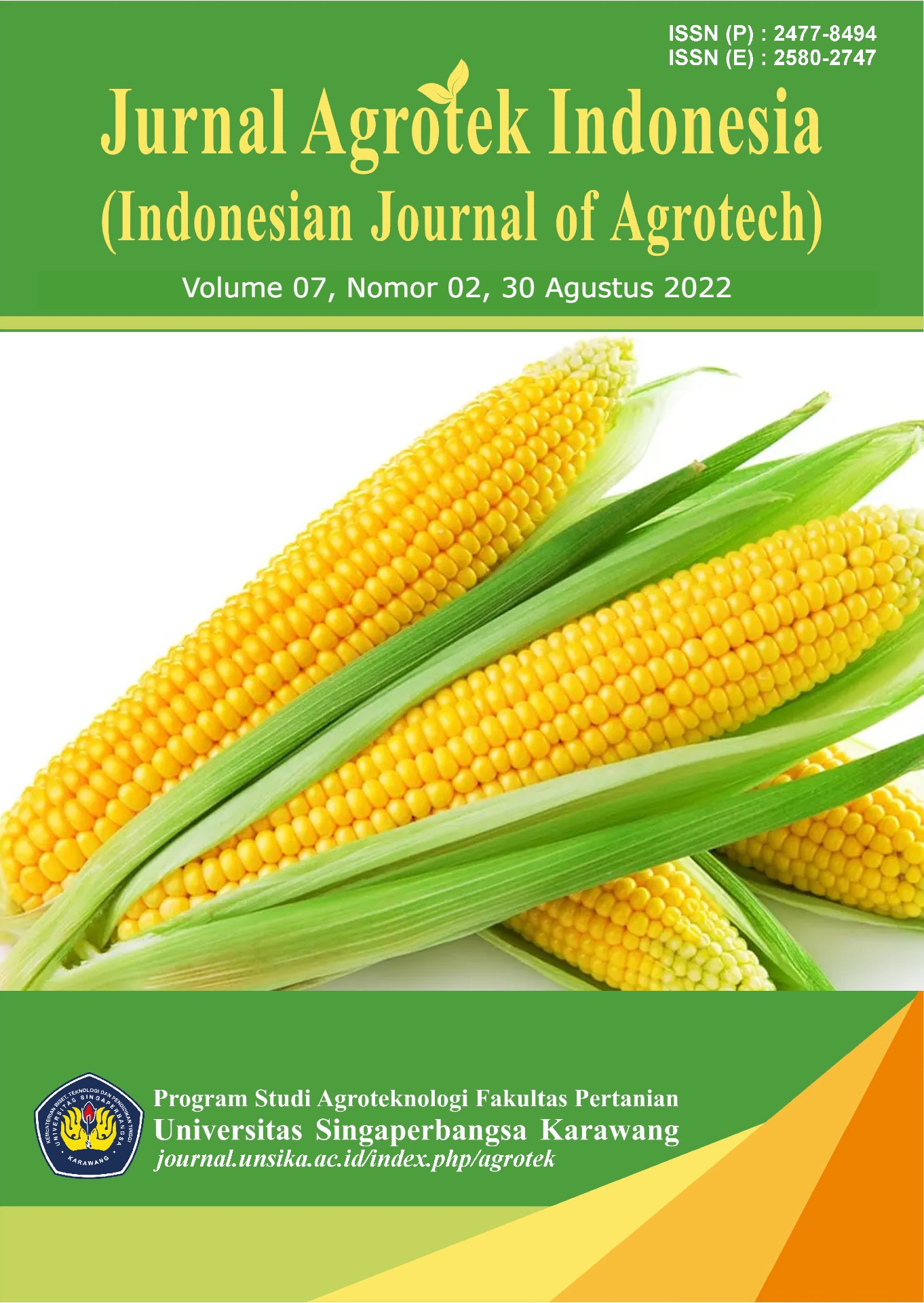Keragaan Karakter Morfologi Dan Daya Hasil Beberapa Calon Hibrida Jagung Manis (Zea mays saccharata Sturt) MS-UNSIKA
Abstrak
Budidaya jagung manis di Indonesia mengalami masalah seperti produktivitasnya yang belum maksimal. Produktivitas jagung dapat maksimal salah satunya dengan cara perakitan hibrida unggul. Karakter morfologi penting untuk diamati karena berpengaruh pada produksi dan kualitas hasil tanaman jagung. Penelitian bertujuan untuk mendapatkan calon hibrida jagung manis MS-UNSIKA yang terbaik berdasarkan karakter morfologi dan daya hasil. Penelitian ini dilakukan Kebun Ambu Pusakamulya, Kabupaten Purwakarta pada bulan Juli hingga September 2021. Metode penelitian ini dengan rancangan acak kelompok (RAK) faktor tunggal. Perlakuan terdiri dari 33 calon jagung manis hibrida UNSIKA dengan 3 pembanding hibrida komersial Bonanza F1, Talenta F1 dan Exotic F1 diulang sebanyak 3 kali. Apabila menunjukan hasil berbeda nyata kemudian dianalisis menggunakan uji lanjut DMRT (Duncan Multiple Range Test) taraf 5%. Hasil penelitian karakter kuantitatif berpengaruh nyata pada parameter tinggi tanaman, diameter batang, jumlah daun, bobot tongkol dengan kelobot dan tanpa kelobot. Terdapat perlakuan terbaik pada genotipe UNSIKA 3 pada tinggi tanaman (229,60 cm), genotipe UNSIKA 9 pada jumlah daun (12,60 helai), genotipe UNSIKA 2 pada diameter batang (36,49 mm), genotipe UNSIKA 34 pada bobot tongkol (375,80 g) dan genotipe UNSIKA 43 pada bobot tongkol tanpa kelobot (256,00 g).



 Indonesian Journal of Agrotech
Indonesian Journal of Agrotech